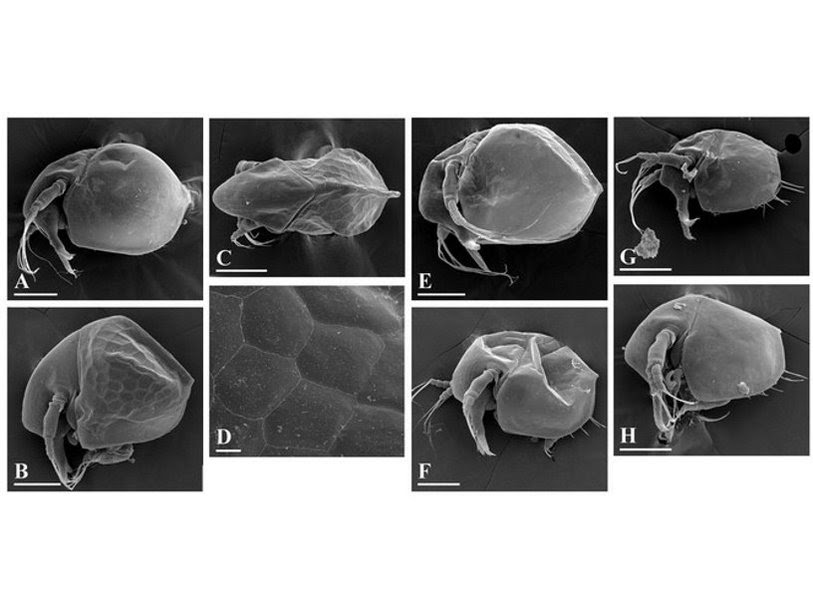
Biologists from the A.N.Severtsov Institute of Ecology and Evolution of the Russian Academy of Sciences (Moscow) and the I.D.Papanin Institute for Biology of Inland Waters of the Russian Academy of Sciences (Borok), in collaboration with scientists from the State University of New York, studied the sequences of several genes of the water fleas of the genus Bosminopsis and reconstructed their evolutionary history. It turned out that first representatives of this genus originated in the time of the dinosaurs. This study is one of the stages in the formation of new ideas about the biogeography of freshwater animals in Eurasia. The article was published in the journal PeerJ with the support of the Russian Science Foundation (RSF), the press service of the foundation briefly told about the results of the study.
Water fleas, or branched crustaceans, are microscopic, no more than six millimeters, animals, and the size of representatives of the bosminid family is even less than a millimeter. They are so widespread that individual representatives can be found even in Antarctica. In total, about 850 different species of water fleas are known today. They are used as food for aquarium and industrial fish and as indicators of the toxicity of aqueous solutions of chemical compounds. In addition, the genome of water fleas provides extensive material for research, since it contains more than 30 thousand different genes, which, for example, is 5-10 thousand more genes than in humans.
The researchers analyzed 32 populations of water fleas of the genus Bosminopsis, which were collected in Russia, South Korea, the United States, Japan, China and Thailand. The biologists have reconstructed the evolutionary history of this group. To do this, they analyzed the external structure of water fleas under a microscope and at the same time determined the nucleotide sequences of individual genes and analyzed their similarities and differences. In total, four genes were studied: mitochondrial COI and 16S and nuclear 28S and HSP. This is a fairly common set that is used in such cases. In particular, the COI gene is a standard for "genetic barcoding", that is, the genetic key for determining the belonging of a sample to a particular taxon. It is important that both mitochondrial and nuclear genes were used in the research, since it is not at all guaranteed that the data for one and the other will coincide.
“It turned out that this genus is distinguished by the extreme ancientry of species isolation. In general, water fleas are of Paleozoic origin, much older than, for example, mammals and even dinosaurs. At the same time, the main genetic groups of bosminopsis were divided in the Cretaceous period, that is, they already existed at the time of giant reptiles, but, unlike them, have not died out by now,” says Alexei Kotov, project manager for a grant from the Russian Science Foundation, corresponding member of the Russian Academy of Sciences. Doctor of Biological Sciences, Chief Researcher at the A. N. Severtsov Institute of Ecology and Evolution of the Russian Academy of Sciences.
In this study, the scientists using genetic and morphological methods have demonstrated that only one species of the genus is found throughout Northern Eurasia, namely Zernov's bosminopsis. It is characterized by a very wide distribution, weak genetic structure, and small genetic distances between distant populations. The study is significant for further fundamental work on the study of the biogeography of freshwater animals.
Related materials:
TASS Science: "The most common species of aquatic fleas turned out to be the same age as dinosaurs"
Around the World: "Some species of water fleas are the same age as dinosaurs"
Russian Science Foundation: "Some species of water fleas turned out to be the same age as dinosaurs"
